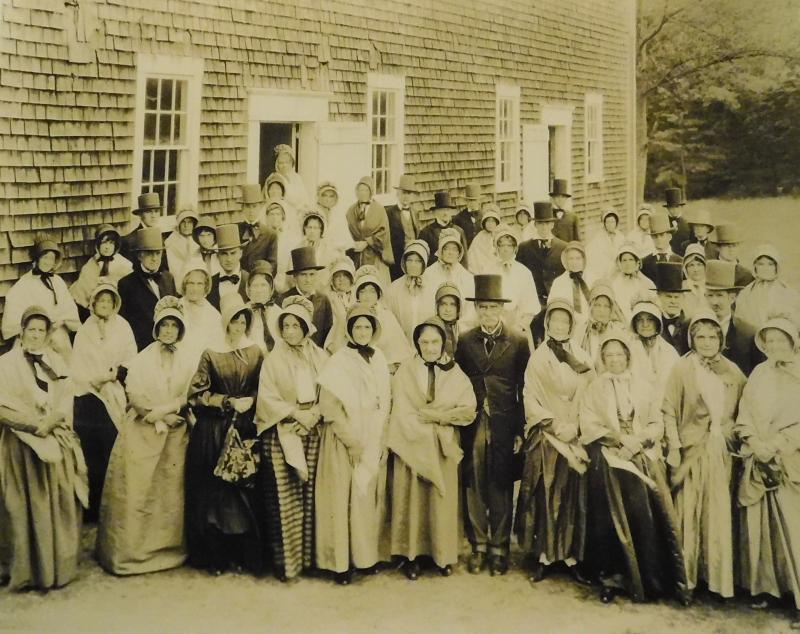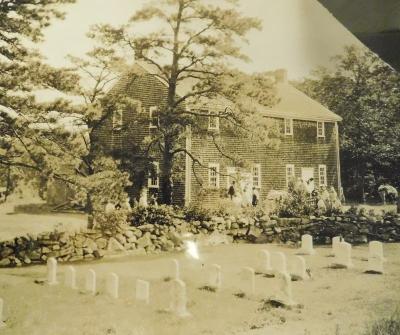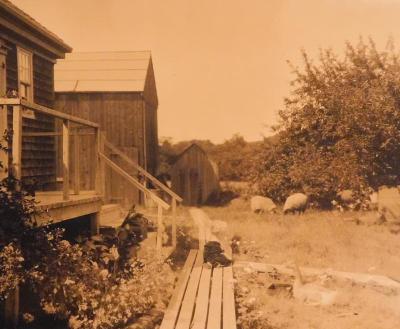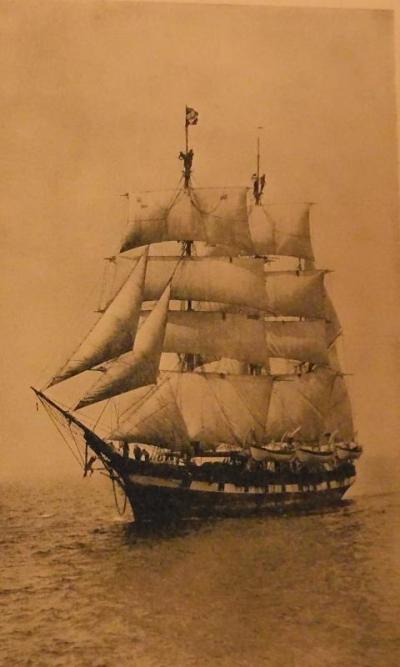Dartmouth’s star turn in silent movie
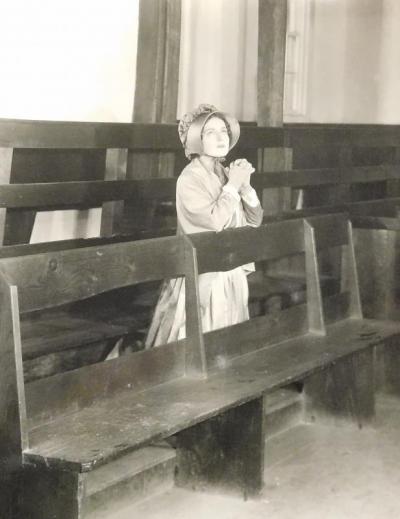
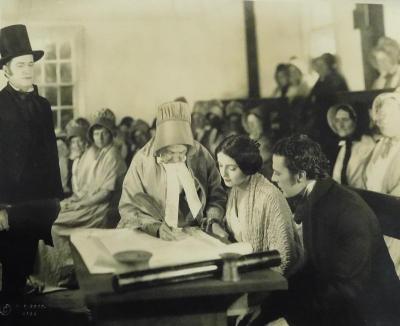
On September 25, 1922, Dartmouth first appeared on the big screen at the world premiere of the silent movie “Down to the Sea in Ships” at the Olympia Theater in New Bedford.
The film, which later became known as Clara Bow’s debut, was a romance set among whalers and Quakers in the late nineteenth century. The film is also known for its footage of whaling, as described in promotional material:
“Among the whales captured by the crew of “Down to the Sea in Ships” one was harpooned which measured over 80 feet in length; weighed nearly 100 tons, gave forth over 100 hogsheads of Sperm oil; had jaws measuring over 21 feet long, with 46 teeth — some of which weigh 6 pounds — and whose vertebrae in many of his sections are larger around than a kitchen chair seat.”
A promotional article distributed to newspapers for publication described the role of the Apponagansett Meeting Members in the movie’s production:
“Garbed in treasured gowns of the long ago, many of them heirlooms handed down through several generations, many of the still prominent Quakeresses of New Bedford lent their aid in providing a more realistic setting and background for this picture, unlike anything that has hitherto been produced for the silent drama. Even the quaint, drab though picturesque, meeting house used by the New Bedford Quakers for more than 100 years was utilized, including a faithful reproduction of a Quaker marriage ceremony, presided over by genuine members of the sect, and carried out with all the solemnity with which the service was solemnized since the earliest days of the faith.
When [director] Mr. Clifton, with the aid of a coterie of New Bedford citizens, who wished to preserve for all time a faithful reproduction of the industry which put the little Massachusetts port town on the map, reached a decision to produce “Down to the Sea in Ships,” they had little difficulty in persuading their quiet-mannered Quakers to lend their assistance. Treasure chests, long since forgotten, were resurrected from musty and cobwebbed attics and garrets. Gowns, the pride of their wearers in the long ago, were retrieved, quaint little knickknacks and mementos were brought to light and not a single detail overlooked that would aid in providing a most realistic setting for this super-picture.
At least one of the Quaker gowns shown in the picture is more than 150 years old. It was worn by the grandmother of the present wearer, who is herself more than 80 years of age, and is the identical gown in which she was married three decades ago. Laces, shawls, bonnets, even handkerchiefs which years and years ago were the prized possessions of their owners, were introduced.
Not only the gentler sex, but likewise the men, stern, haughty and God-fearing Quakers in every sense of the word, and many of them descendents of the most prominent families who populated the Atlantic coast region of New England in the preceding century, are to be found taking prominent parts in the production…
In the Quaker meeting house the old-time custom of the men occupying one portion of the divided room, and the meeting the other followed by the joint meeting following the meditation and prayer period is most entertainingly shown.
Another long established Quaker custom, which is made an interesting feature of in the photoplay, is the holding of religious service on board the departing whaling ship.”
“Down to the Sea in Ships” was produced by the Whaling Film Corporation, which was established in September 1921 to record the whaling industry and the history of the people of “Old Dartmouth.”
The film was distributed to theaters across the country and internationally. More than 130,000 people saw the film at the Cameo Theatre in New York City over its more than 12 week run.
The movie was aggressively advertised, and many theaters displayed “whaling artifacts” in their lobbies and windows to entice moviegoers.
All the photographs and textual sources for this article are from the New Bedford Whaling Museum’s extensive collection.



